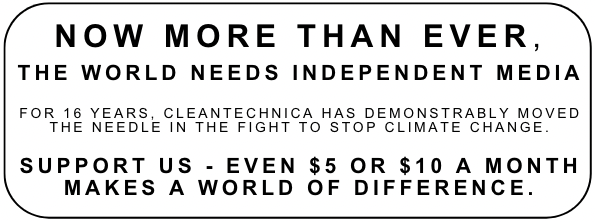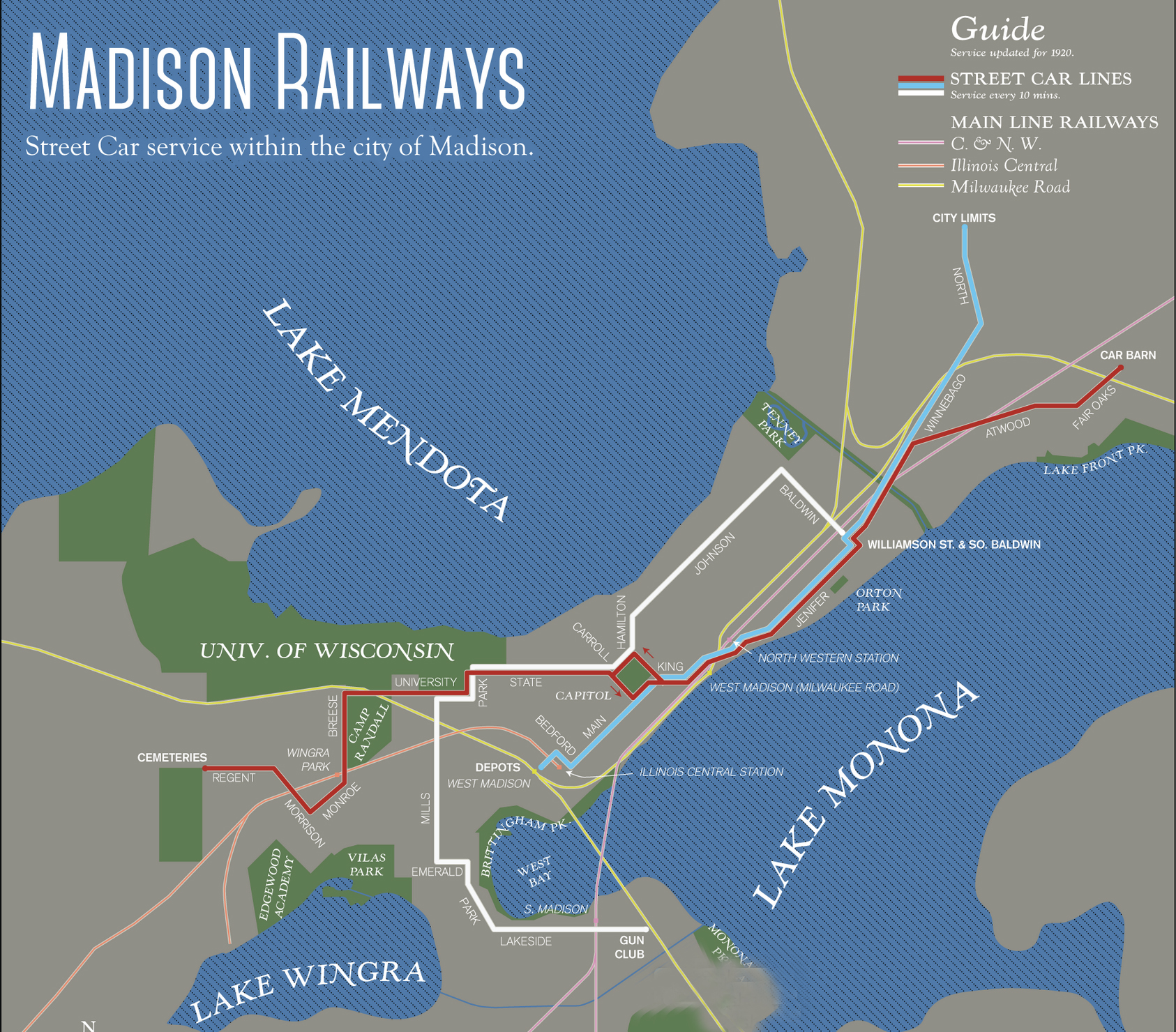
Sign up for daily news updates from CleanTechnica on email. Or follow us on Google News!
In the 1920s, Madison had a fully functioning overhead electric pantograph steel rail streetcar system. See a Madison Wingra Line Streetcar in the upper panel of the photo below.

Below we see a map made by Jake Berman in 2020 depicting Madison’s complete streetcar system 100 years ago with 3 separate lines. All the lines traversed Capitol Square. The Red Line also served the new Madison West High School which opened in 1930, Camp Randal Football Stadium, the University of Wisconsin, and the East side of Madison. The White Line also reached the Gun Club on Lake Monona and the near East Side. The Blue Line also served the Railroad Station and the “far” East Side


The population of Madison was less than 50,000 in 1930. In those days, the efficiency of running on steel rails with electric motors powered by overhead electric pantograph trumped any other mode of public transportation. However, with the introduction of gas-powered buses, by 1935 the streetcar system had been retired. I was born in Madison in 1940 and remember seeing streetcar tracks being paved over when I was a child. You can see me in this photo in 1945 with my sister and my dad who had just returned from serving for the US War Department in the Strategic Bombing Survey in Germany and Austria just after WWII.
Almost 100 years later, with Madison’s population approaching 300,000, what is Madison doing to upgrade its transit system? Unlike Salt Lake City, which had a population of only 180,000 in 2000 when its new steel rail streetcar system began operation, Madison is not willing to tear up streets and build a steel rail transit system. However, electric bus technology has recently reached the point where it is economical to convert bus transit systems from gas to electricity with dedicated lanes.
Madison is doing something it calls a Bus Rapid Transit system (BRT). Metro Transit has upgraded its fleet to more than one third all-electric vehicles, with the addition of 62 New Flyer articulated buses. There are now 16,000 of this type of Xcelsior buses on North America’s roads.
Madison’s geographical extent is much larger now with towns like Middleton and Sun Prairie now incorporated into the Madison Metropolitan region. In the image below we see the first Bus Rapid System East/West A-Route illustrated in red, which reaches both Middleton in the West and Sun Prairie in the East.

BRT A-Line opened September 22, 2024. The North/South B-Route in green which services Dane County Regional Airport to the North and Fitchburg to the South is also in operation. While Route B is already using electric buses, it won’t technically become a BRT until the new stations are completed in the summer of 2028. There are 4 chargers located on the A-Line. The system uses the high-speed pantograph chargers as shown in the image below. However, the B-line buses can’t make it through the day without charging, so they must take a long detour to Metro Transit’s Hanson Road Facility on the far East Side to charge. Metro Transit is planning to rectify the situation by installing a high-speed pantograph charger on the B-Line in the summer of 2025.

“Through the use of larger buses, bus only dedicated lanes, and a new fare collection system, Metro’s Rapid Route A moves riders more quickly and efficiently through the community. Metro Rapid Routes A and B offer 15-minute service Monday through Friday until 8:00 pm and until 7 pm on Saturdays. Thirty-minute service is available on Sundays and holidays.
“These electric buses are features on the new Rapid Routes A and F as well as Route B.
“Funded by the Biden Infrastructure Law, the new vehicles provide increased room so that more people can comfortably ride. The buses can transport nearly 110 people, which is 50% more than the capacity on Metro’s current local buses.” — Metro Transit website
The site also lists the following goals:
- Help reduce fuel use by roughly a quarter-million gallons of diesel fuel per year
- Zero emissions buses can avoid up to at least 135 metric tons of greenhouse gas annually.
- New lightweight electric traction drive systems with up to 90% energy recovery, are more energy efficient.
- Creates little to no noise when idling. In motion, they operate at a noise level that is measured below that of a normal conversation.
- Improved convenience for those riding in wheelchairs due to a Q’Straint Quantum, an automatic rear-facing wheelchair securement system.
- Boarding with Bikes: On BRT vehicles, all bike racks are located inside the back of the bus. If you’re traveling with a bike, board at the rear door. Look for images on the ground to show you where the rear of the bus will line up on the platform.
The Bus Rapid Transit Station Concept is shown in the featured image. Note that the BRT buses are running on dedicated lanes and the stations are in the center of the street. See the bottom panel of the first image of this article and a below to see one of these stations in operation.

“Ticket Machines are on the platforms: Metro has a brand-new fare system that makes it easier than ever before to pay and ride. Before your bus arrives, have your new smartcard fare ready to go. Buses do not accept cash while boarding on BRT platforms. If you need to pay with cash, buy a ticket or one-day pass at the ticket machine located on most BRT platforms. See illustrations below on how the new fare system works.” — Metro Transit website

All routes (A, B, F, and R) access the Capitol Square Station as shown below.

Referral Program: Tesla has reactivated its referral program. If you find any of my articles helpful to you, please use my referral link: https://ts.la/arthur73734 (Be sure to use it when you make your order). If you are buying a new Tesla and use my link, you’ll receive $1000 off your purchase price for Model S and X, or $500 off for Model 3 and Y. You will also get 3 months of Full Self-Driving. It is technically FSD Beta and it will drive you automatically to any address you enter into the navigation. (Just be prepared to intervene immediately if it screws up.)

Chip in a few dollars a month to help support independent cleantech coverage that helps to accelerate the cleantech revolution!
Have a tip for CleanTechnica? Want to advertise? Want to suggest a guest for our CleanTech Talk podcast? Contact us here.
Sign up for our daily newsletter for 15 new cleantech stories a day. Or sign up for our weekly one if daily is too frequent.
CleanTechnica uses affiliate links. See our policy here.
CleanTechnica’s Comment Policy




